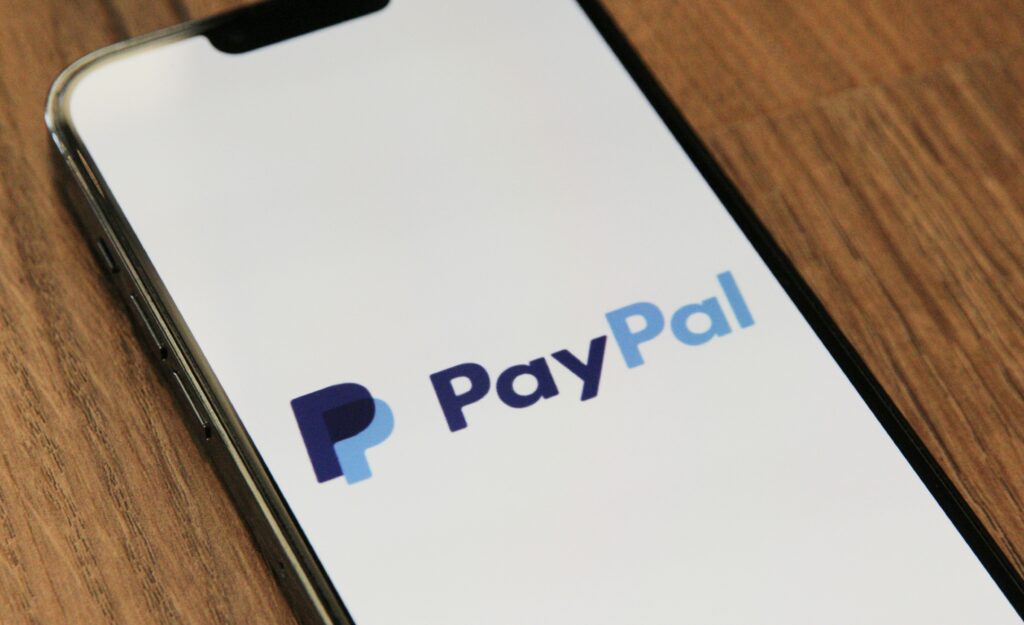Efficient transactions are the lifeblood of any successful business. But sometimes, our trusted tools don’t always work in our favor. One such scenario involves PayPal freezing funds, a situation that has left many online merchants in a lurch.
If you’ve ever had your PayPal account frozen, you know the struggle of not being able to access your hard-earned money. It’s frustrating, stressful, and, unfortunately, all too common.
But what if there was a way around this? A simple ‘hack’ that could potentially expedite the process of retrieving your frozen funds? This guide is here to introduce you to just that. We’re going to explore a method involving paying off a negative balance in your business PayPal account with money from your personal bank account.
Understanding PayPal’s Fraud Policy
Navigating the online business landscape can often feel like walking through a maze. With multiple variables at play, we have to understand the rules to find our way. One such crucial rule involves PayPal’s policy on freezing funds. Let’s break it down.
PayPal is one of the most popular online payment platforms, used by millions of businesses worldwide for transactions. However, it has a policy where it can freeze the funds in your account under certain circumstances. Typically, this happens when PayPal deems a transaction as ‘high-risk’. But what does ‘high-risk’ mean in PayPal’s terms?
High-risk transactions are often those that PayPal’s internal systems flag as potentially fraudulent activity. From scammers, fraudsters, and hackers to identity theft, malware, and simply consumer greed, there are many potentially fraudulent transaction triggers.
This could be due to a sudden spike in sales, large transactions, or transactions linked to industries prone to high chargeback rates. It could also be a result of customer complaints, disputes, or if your PayPal account is relatively new. PayPal sees these situations as potential threats and freezes the funds to mitigate any possible financial loss.
While PayPal’s policy promises seller and buyer protection from fraud, scams, and suspicious activity, it often leaves merchants in a bind. For smaller businesses, especially, having funds frozen can seriously disrupt operations and cash flow.
This Is NOT the PayPal Overpayment Scam
There are many PayPal scams out there. Some come from fake charities, others from phishing emails, and some from hacked PayPal accounts where . This “hack” is none of these things. It’s a legal roundabout way for PayPal users to get their money back that does not involve PayPal’s Seller Protection program.
If you’re suffering from a phishing scam or you’ve noticed someone gain access to your account, then please contact PayPal directly to resolve the issue.
If you use PayPal, please ensure that you’ve enabled two-factor authentication and PayPal website security questions as well as added your phone number for security.
Burned one too many times by PayPal? We have a better payments solution.
The ‘Hack’: Overpaying Your Debt on PayPal
Now that we understand the problem let’s dive into our “hack” that could potentially offer a way out. This strategy involves paying off any negative balance in your business PayPal account—or transferring funds to your PayPal account, in general—using funds from your personal bank account.
So, why are we doing this? The idea here is to make PayPal hold funds that are neither high-risk nor fraudulent. If your funds are already frozen or become frozen when requesting a transfer back to your bank account for the amount you initially transferred or less, you can argue that PayPal is holding money that is not subject to the usual risks associated with sales transactions.
Remember, this is not a ‘one-size-fits-all’ solution, and it might not work in every situation. It’s a strategy that can potentially help you navigate the tricky terrain of frozen funds using the relationship you have with your personal bank.
The Repercussions: Fraud, According to PayPal’s Terms of Service
As online merchants, we have an obligation to understand the terms and conditions that govern our chosen payment platforms. But these platforms, too, must abide by their own rules. If they don’t, it’s not just bad business – it can be tantamount to fraud. And this is where our strategy of overpaying debt on PayPal comes into play.
When you overpay your debt on PayPal with your personal funds and then PayPal freezes those funds citing high-risk transactions, a red flag should go up. Why? Because the money you transferred is not part of your sales revenue – it’s your personal money used to cover a negative balance and create a buffer. This money should not be subject to the same risks associated with regular sales transactions.
Therefore, if PayPal freezes these funds, they’re essentially withholding a service you’ve paid for. In other words, they’re keeping your money without providing the agreed-upon service, which can be seen as fraudulent behavior according to PayPal’s own terms of service.
This is not a claim to make lightly. It’s crucial to remember that this argument hinges on the distinction between sales revenue and personal funds used to overpay a debt. The latter should not be subject to the same restrictions or risks as the former.
The Chargeback: Getting Your Money Back Faster
The road to retrieving your frozen funds may seem daunting, but there’s a potential shortcut: the chargeback process. This process involves disputing a transaction with your bank or credit card issuer to reverse the charge. So, how can you use this method to retrieve your money from PayPal faster? Let’s break it down.
- Understanding Chargebacks: Chargebacks were originally designed as a form of consumer protection, allowing you to dispute unauthorized charges or instances where a service was not provided. In our context, it’s the latter we’re focusing on – service not provided by PayPal.
- Initiating a Chargeback: Contact your bank or credit card issuer to dispute the transaction where you overpaid your debt on PayPal. Explain that the service you paid for (in this case, the ability to use your money in your PayPal account) was not provided, as PayPal has frozen these funds.
- Providing Evidence: You might need to provide evidence to support your claim. This could include screenshots of your PayPal account showing the frozen funds, your initial transaction details of overpaying the debt, and any communication you’ve had with PayPal about the issue.
- Awaiting the Outcome: Once you’ve submitted your dispute, your bank or credit card issuer will investigate the claim. This process can take anywhere from a few weeks to a few months, but it’s typically faster than waiting for PayPal to unfreeze your funds.
In many cases, banks tend to side with their customers during chargebacks unless the service provider (in this case, PayPal) can prove that the service was indeed provided. As such, this method can potentially help you get your money back faster.
Remember, this process should not be abused and should only be used when a service you’ve paid for was not delivered. It’s not a magic wand but rather a consumer right that you can exercise in specific circumstances.
PayPal’s resolution center is notoriously useless for merchants struggling to regain access to their accounts or funds. We do recommend that you contact PayPal via PayPal email support requesting to life the freeze.
Suffering from high chargeback ratio? We can help!
Preventing Frozen Funds in the Future
Navigating the world of online transactions can be a tricky journey. The rules are complex, the terrain ever-changing, and the stakes high. As online merchants, we’ve all had our share of challenges, and the issue of frozen funds on PayPal is certainly one of them.
We’ve explored a potential ‘hack’ that involves overpaying a debt on PayPal with your personal bank account, and how it could expedite the process of getting your frozen funds back. This hack was actually discovered by one of our own readers. We’ve linked that video here.
But the fight doesn’t end at getting your frozen funds back. It’s about understanding the system better, advocating for your rights as a merchant, and taking proactive steps to prevent such situations in the future. And, if you’re dealing with high-risk transactions, it’s about finding the right partners who understand your needs.
This is where DirectPayNet comes into play. As a high-risk merchant service provider, DirectPayNet understands the challenges that come with high-risk transactions. Our expertise and tailored solutions can provide the support you need to manage your online transactions seamlessly, helping to reduce instances of fund freezing and other similar issues.
With a high-risk merchant account, you can benefit from the same checkout ease your PayPal customers are used to without risk to your business nor your security. Plus, you can accept even more payment methods, like gift cards, foreign credit card companies, debit cards, Apple Pay, and money transfers.
So, why not take that step today to protect your online business? Open a high-risk merchant account with DirectPayNet and give your business the protection it deserves. You’ve fought hard for your money – it’s time you had a partner who fights just as hard to help you keep it.
DON’T LET PAYPAL STEAL YOUR MONEY, OPEN A REAL MERCHANT ACCOUNT TODAY







